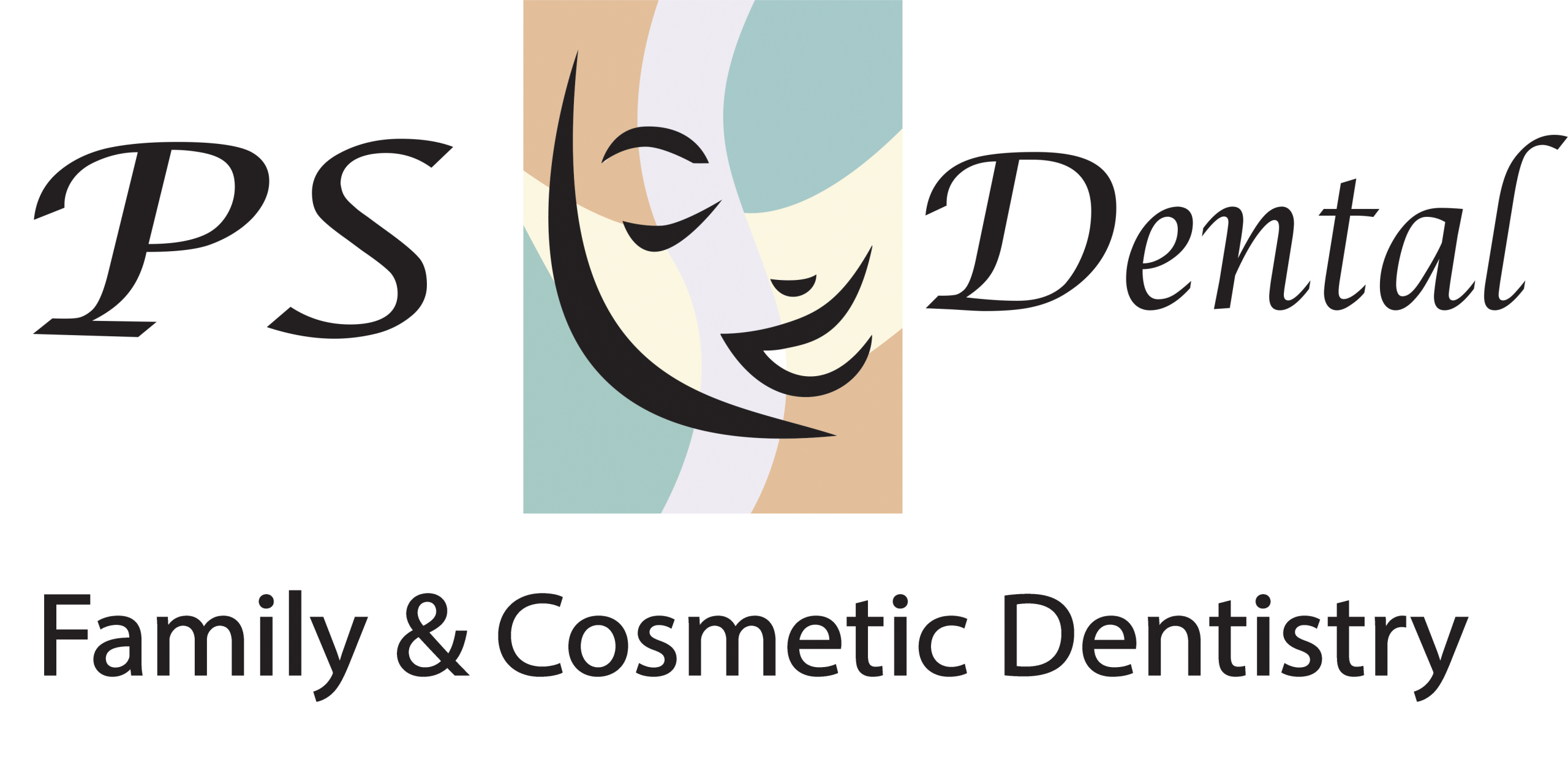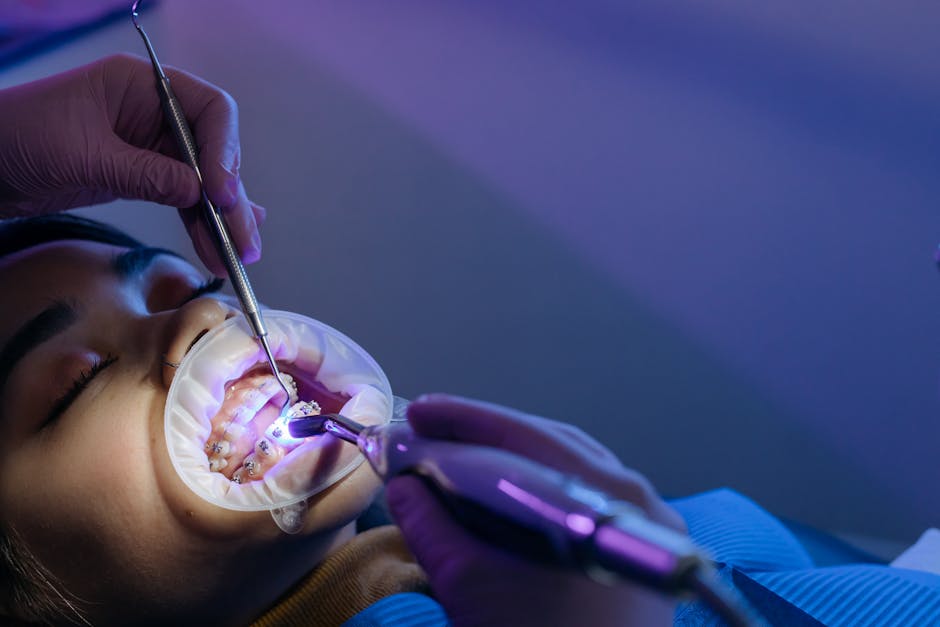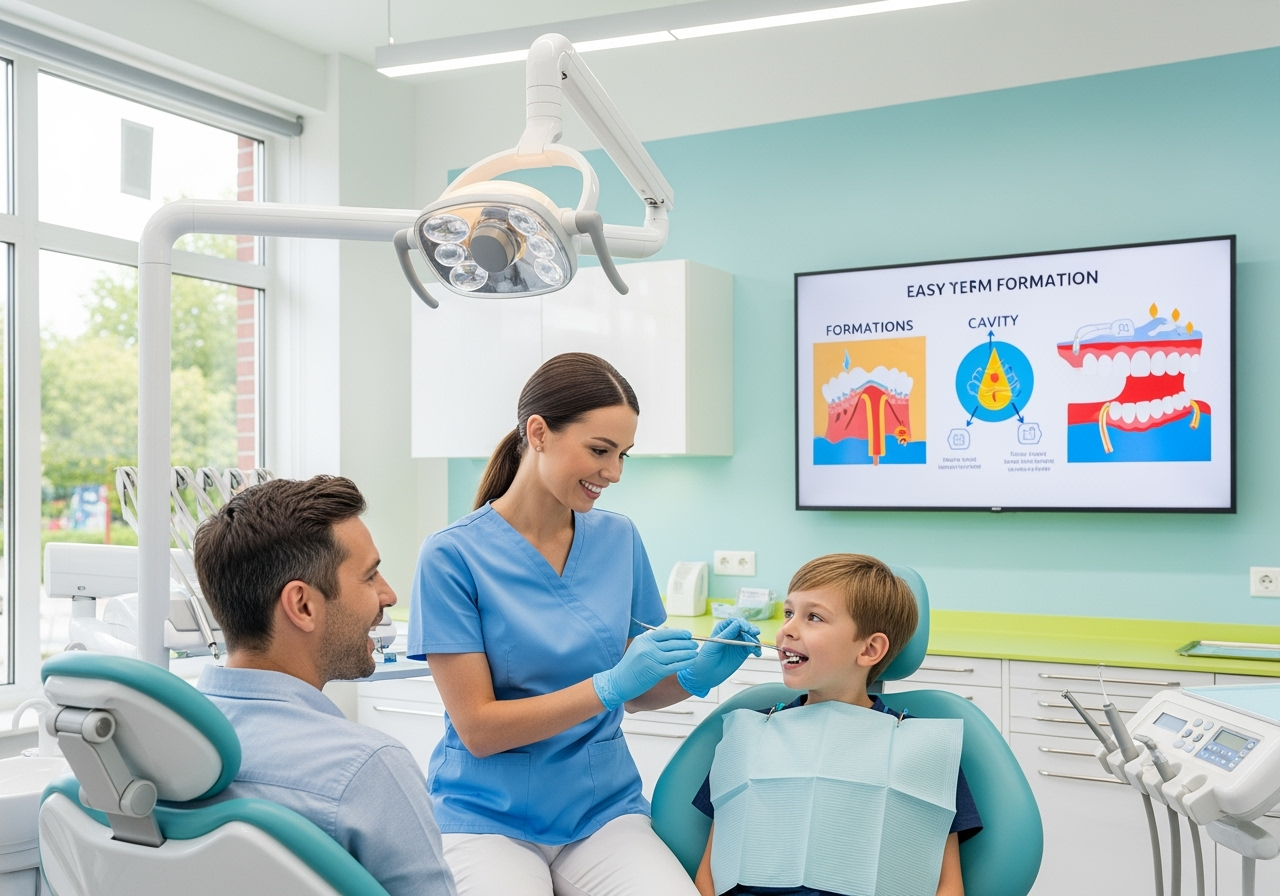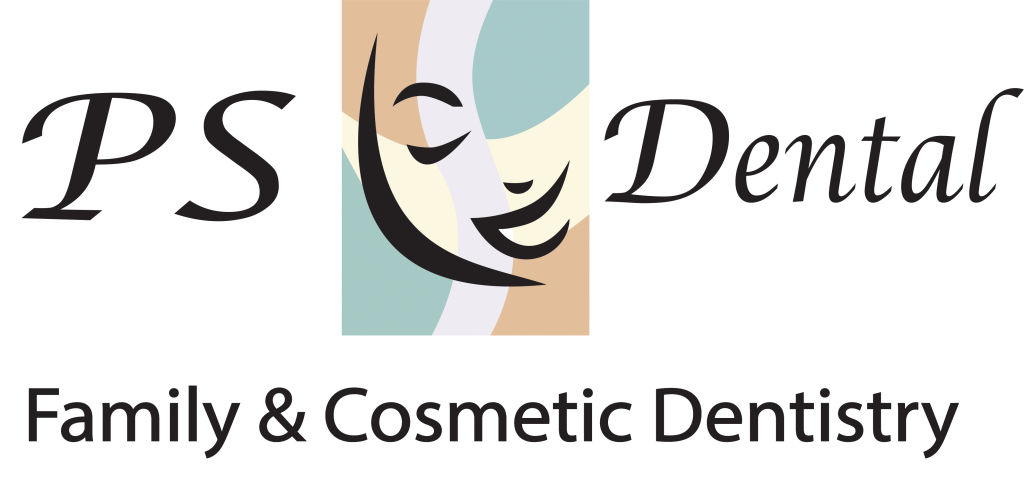Understanding Your Orthodontic Options
Orthodontic treatment options include several approaches to straighten teeth and correct bite problems. Here’s a quick overview of your main choices:
- Traditional Metal Braces: The most common option using brackets and wires
- Ceramic Braces: Similar to metal braces but with tooth-colored brackets
- Lingual Braces: Attached to the back of teeth, making them invisible from the front
- Self-Ligating Braces: Use clips instead of elastics to hold wires, requiring fewer adjustments
- Clear Aligners: Removable clear plastic trays (like Invisalign) that gradually shift teeth
- Functional Appliances: Help guide jaw growth and development in children
- Palatal Expanders: Widen the upper jaw to create space for crowded teeth
- Retainers: Used after active treatment to maintain results
Most treatments take between 6 and 30 months, depending on the complexity of your case. While the aesthetic benefits are obvious, orthodontic treatment also improves oral health by making teeth easier to clean, reducing the risk of cavities and gum disease, and can even help with issues like jaw pain and speech difficulties.
I’m Dr. Parisa Sepehri, and with over 30 years of experience, I’ve helped countless patients achieve their ideal smiles through personalized orthodontic treatment options that focus on both function and aesthetics.

Simple guide to Orthodontic treatment options terms:
Why Orthodontic Treatment Matters
When we talk about orthodontic treatment options, we’re not just discussing cosmetic improvements. Orthodontics addresses a wide range of dental and facial issues that can impact both your health and confidence.

Think of your teeth as a team – when everyone’s in the right position, they work beautifully together. But when things get misaligned (what dentists call malocclusion), problems start to emerge.
Crowding happens when your jaw doesn’t have enough room for all your teeth, causing them to overlap. Spacing issues create gaps that can trap food particles, leading to decay. Many patients struggle with overbites or underbites, where either the upper or lower teeth extend too far beyond their counterparts.
These alignment issues aren’t just about appearances. Living with misaligned teeth can lead to real health challenges. Jaw pain often develops as your mouth tries to compensate for an uneven bite, sometimes developing into painful TMJ disorders. Many patients are surprised to learn that their speech difficulties might actually stem from tooth positioning.
The oral health benefits of orthodontic treatment are substantial. When teeth are properly aligned, they’re significantly easier to clean, reducing your risk of cavities and gum disease. Research from the British Orthodontic Society confirms that correcting alignment issues can prevent uneven tooth wear, improve chewing function, and even help with proper digestion.
Perhaps what matters most to many of our patients at PS Dental Services is the change in self-esteem. The confidence that comes with a healthy, aligned smile can’t be overstated.
At our Tigard practice, we evaluate each patient’s unique needs to recommend the most appropriate orthodontic treatment options.
Main Orthodontic Treatment Options Explained
The world of orthodontics has blossomed in recent years, giving you more orthodontic treatment options than ever before. Let’s explore the main choices so you can better understand which might be the perfect fit for you.

Traditional & Advanced Braces
Traditional metal braces remain our most versatile orthodontic treatment option. They consist of metal brackets bonded to each tooth, connected by archwires that guide your teeth into position.
Today’s versions are smaller and more comfortable than ever. Many younger patients enjoy expressing themselves with colorful elastics that match holidays or school colors.
If you’re concerned about visibility, ceramic braces offer the same results with tooth-colored brackets that blend with your smile. They’re slightly pricier and can stain if you’re not careful, but many image-conscious patients appreciate the compromise.
Lingual braces are placed behind your teeth, making them completely invisible from the front! These custom-made brackets require special training to install and may temporarily affect speech, but offer truly invisible treatment.
For tech-savvy patients, self-ligating braces use specialized clips instead of elastic ties to hold the archwire. This innovation means fewer adjustment appointments, less friction, and easier cleaning.
Clear Aligners & Invisible Choices
Clear aligners have revolutionized orthodontics for patients seeking a nearly invisible treatment path. At PS Dental Services, we offer both Invisalign and Clear Correct.
The process begins with a digital scan of your teeth to create a 3D model and treatment plan. You’ll receive a series of custom-made clear plastic aligners, wearing each set for 1-2 weeks before progressing to the next.

Invisalign uses their patented SmartTrack® material for more predictable tooth movement. The key to success is wearing your aligners 20-22 hours daily, removing them only for eating, drinking anything besides water, and oral hygiene.
Clear aligners are ideal for adults and teens concerned about appearance, those with active lifestyles, and anyone wanting flexibility to remove their orthodontic appliance occasionally.
Removable & Functional Appliances
For growing children, specialized orthodontic treatment options address developmental issues that are best caught early.
Palatal expanders widen the upper jaw, creating more space for crowded teeth and improving bite alignment. They’re particularly effective for children before age 15.
Functional appliances work by repositioning the lower jaw to encourage proper growth. The twin block appliance consists of upper and lower plates that guide the lower jaw forward. Schwarz plates can expand the dental arch and help with minor tooth positioning.
We also offer habit-breaking appliances designed to discourage thumb sucking or tongue thrusting, which can push teeth out of alignment.
At PS Dental Services in Tigard, we’re advocates for early intervention. The American Association of Orthodontists recommends children have their first orthodontic check-up by age 7, when we can identify potential problems early and often reduce the need for more extensive treatment later.
Auxiliary Devices: Headgear & Elastics
Sometimes your primary orthodontic treatment options need extra help from auxiliary devices.
Headgear might sound intimidating, but modern versions are surprisingly comfortable and typically only worn at home and while sleeping. Cervical pull headgear helps correct overbites, while a reverse-pull facemask helps bring the upper jaw forward for underbites.

Those tiny orthodontic elastics (rubber bands) are powerful tools that connect points on your upper and lower teeth to apply precise forces that help close spaces and improve bite alignment. Consistent wear is crucial for success.
For specialized tooth movements, mini-implant anchors (temporary anchorage devices or TADs) provide fixed points from which we can apply force to move teeth in ways that weren’t possible before.
For our athletic patients, properly fitted sports mouthguards protect both your orthodontic investment and your teeth during physical activities.
The Orthodontic Journey: From First Visit to Lifetime Retainers
Understanding the complete process of orthodontic treatment helps set realistic expectations. Here’s what to expect when you choose PS Dental Services in Tigard for your orthodontic treatment options.

Your smile journey begins with an initial consultation where we’ll take photographs, perform a clinical examination, take X-rays, and create digital 3D scans of your teeth. This information allows us to develop a personalized treatment plan.
During treatment planning, we’ll discuss which orthodontic treatment options will work best for your specific situation, including alternatives, timeline, visit frequency, and costs.
The active treatment phase typically lasts between 6 and 30 months, with the average being about 24 months. For traditional braces, you’ll visit us every 4-8 weeks for adjustments. With clear aligners, check-ups are typically every 8-12 weeks as you change aligners at home.
When treatment is complete, we’ll remove any orthodontic attachments, clean and polish your teeth, take final records, and fit you with retainers.
The retention phase is crucial – your teeth have memory and will try to shift back without proper retention. You’ll receive either fixed retainers (thin wires bonded to the back of your front teeth) or removable retainers (clear plastic or wire devices), or sometimes both.
Initially, you’ll wear removable retainers full-time except when eating and brushing, eventually transitioning to nighttime wear only. However, some level of retainer wear is recommended indefinitely to maintain your results.
Caring for Teeth & Appliances
Proper oral hygiene is essential during orthodontic treatment.
For Traditional Braces:
- Use a soft-bristled or orthodontic electric toothbrush at a 45-degree angle
- Clean between teeth with proxy brushes, floss threaders, or water flossers
- Use an alcohol-free fluoride mouthwash to prevent white spots
For Clear Aligners:
- Clean aligners daily with a soft toothbrush and mild soap or aligner cleaner
- Always brush and floss before reinsertion
- Maintain 20-22 hour daily wear time
Dietary Considerations:
With braces, avoid hard, sticky, and chewy foods that could damage your appliances. Clear aligner users can remove their appliances for meals but should brush before reinsertion.
Managing Discomfort:
Some discomfort is normal after adjustments or when starting a new aligner. Over-the-counter pain relievers, orthodontic wax, and softer foods can help manage this temporary discomfort.
Costs, Insurance & Choosing Your Best Fit
The price of orthodontic treatment varies based on treatment complexity, appliance type, and duration:
- Traditional metal braces: $3,000-$7,000
- Ceramic braces: $4,000-$8,000
- Lingual braces: $8,000-$10,000
- Clear aligners: $3,500-$8,000
Many dental insurance plans include orthodontic benefits, typically covering 50% of treatment costs up to a lifetime maximum (commonly $1,000-$3,000).
At PS Dental Services, we offer several payment options:
- Flexible spending accounts (FSAs) and health savings accounts (HSAs)
- Payment plans with low or no interest
- Family discounts
- Paid-in-full discounts
Beyond cost, consider lifestyle needs, compliance ability, and age factors when choosing your orthodontic treatment options. Our team will help you find the treatment approach that balances effectiveness, aesthetics, lifestyle compatibility, and budget.
Orthodontic Treatment Options FAQ
How long will orthodontic treatment options take?
Treatment time varies based on individual factors. Simple cases might take just 6-12 months, while more complex cases involving significant bite correction can take 24-36 months.
The type of treatment also affects timeline. Traditional braces usually take about 18-24 months on average, while clear aligners might work in 12-18 months for suitable cases. Early intervention treatments for children typically run about 9-12 months.
Your own biology makes a difference too – some people’s teeth move more readily than others. Most importantly, your participation significantly impacts treatment time. Following instructions about elastic wear, keeping aligners in for the recommended hours, and attending all appointments can help keep treatment on schedule.
At PS Dental Services, we use advanced technology to create efficient treatment plans while respecting the biological process of tooth movement. During your consultation, we’ll provide a personalized timeline for your unique situation.
At what age should my child first see an orthodontist?
The American Association of Orthodontists recommends children have their first orthodontic check-up by age 7. By this age, the first permanent molars and incisors have usually erupted, giving us insight into how their smile is developing.
Some conditions are much easier to treat when caught early. For example, a crossbite can often be corrected with a simple palatal expander in a young child, while the same condition might require more complex treatment later.
Early intervention (Phase 1 treatment) typically involves targeted treatment with specific goals:
- Guiding jaw growth during critical development periods
- Creating space for crowded teeth
- Reducing the risk of trauma to protruding front teeth
- Addressing harmful habits before they cause lasting changes
Even if immediate treatment isn’t needed, these early visits allow us to monitor development and intervene at the optimal time if necessary.
What happens if I stop wearing my retainer?
If you stop wearing your retainer, your teeth will almost certainly shift. This movement, called relapse, happens because periodontal ligaments have a “memory” and natural aging processes continue to affect tooth position throughout life.
In the first few months after treatment, changes can happen quickly without retainers. During years 1-5, moderate shifting may continue, especially in the front teeth. Throughout your lifetime, subtle changes can accumulate, gradually affecting your smile.
The solution is straightforward: wear your retainers as prescribed. Initially, this means full-time wear except for eating and brushing, gradually transitioning to nighttime only. Some level of retainer wear is recommended indefinitely.
If you’ve experienced shifting, minor relapse might be corrected by consistently wearing your retainer (if it still fits). Moderate relapse might require a new retainer or limited retreatment, while significant changes typically call for comprehensive retreatment.
At PS Dental Services, we emphasize retention from day one because we want your beautiful smile to last a lifetime.
Conclusion
Finding your way through the maze of orthodontic treatment options might feel overwhelming at first, but you don’t have to make this journey alone. At PS Dental Services in Tigard, Oregon, we believe every smile tells a story, and we’re here to help write yours. Our approach goes beyond simply straightening teeth – we consider your complete oral health, daily lifestyle, and the smile you’ve always dreamed of having.
The rewards of orthodontic treatment truly transform lives. When your teeth align properly, they experience less wear and tear. Your jaw joints function more smoothly, potentially eliminating headaches or jaw pain. Straight teeth are simply easier to clean, which means fewer cavities and healthier gums for years to come. Many patients even notice improvements in speech and breathing patterns.
And let’s not forget the confidence boost! There’s something magical about smiling without hesitation, whether you’re 15 or 50.
The three pillars of successful orthodontic treatment are:
- Selecting the orthodontic treatment option that truly fits your unique situation
- Following your treatment plan diligently
- Maintaining your results with proper retainer use
Dr. Parisa Sepehri and our team bring decades of smile-changing experience to every patient. We’ve created an environment where advanced orthodontic technology meets genuine compassion and understanding.
We’d love to welcome you in for a consultation to explore which orthodontic treatment options might be right for you or your child. Our Tigard office makes orthodontic care convenient for families throughout the area.
The truth is, there’s no age limit on achieving the smile you deserve. We regularly treat everyone from young children to grandparents, because it’s never too late to improve your oral health and confidence.
Learn more about our orthodontic services or call our Tigard office today to schedule your consultation. Your ideal smile is waiting!
Dr. Parisa Sepehri
Latest posts by Dr. Parisa Sepehri (see all)
- Transform Your Smile: The Power of Dental Bonding for a Hollywood Makeover - November 20, 2025
- Revolutionizing Tooth Restoration: The Power of CEREC Crowns in Digital Dentistry - November 19, 2025
- Transform Your Smile: The Top Benefits of a Hollywood Smile Makeover - November 18, 2025
- Unlocking the Benefits of Sedation Dentistry for Complex Dental Surgery: A Guide to Inpatient and Emergency Care - November 17, 2025
- Revolutionizing Tooth Restoration: The Power of CAD/CAM Dental Technology and Same Day CEREC Crowns - November 16, 2025






